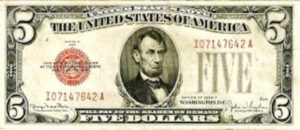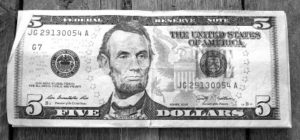Does the national debt matter? Part 1
David Andolfatto
A report entitled Does the National Debt Matter? by David Andolfatto, an economist with the U.S. Federal Reserve Bank of St. Louis, appeared in December 2020. We reproduce the first part of this report below. The report relates to the U.S. economy, but the analysis and conclusions remain valid for most monetary sovereign countries, including Australia. Part 2 will appear in a subsequent issue of ERA Review.
In the second quarter of 2008, federal U.S. debt held by the public totalled about $5.3 trillion, or 35 percent of GDP (gross domestic product). This figure grew to $20.5 trillion – 105% of GDP – by the second quarter of 2020. To put it another way, the national debt has increased 400% in 12 years, while over the same period, national income has grown by only 30%.
Since the Congressional Budget Office projects that federal budget deficits of 4%-5% of GDP will persist in the foreseeable future, a growing number of analysts and policymakers are raising alarms about whether this fiscal situation is sustainable.
Most people have a very personal view of the nature of debt. We know that high levels of debt and deficit spending at the household level are not sustainable. At some point, household debt has to be paid back. If a household is unable to do so, then its debt will have to be renegotiated. It is natural to think that the same constraint must hold true for governments. But this “government as a household” analogy is imperfect, at the best. And the analogy breaks down for several reasons.
Debt Issuance
While a household has a finite lifespan, a government has an indefinite planning horizon. So, while a household must eventually retire its debt, a government can, in principle, refinance (or roll over) its debt indefinitely.
Yes, each debt has to be repaid when it comes due. But maturing debt can be replaced with newly issued debt. Rolling over the debt in this manner means that (in the aggregate) it never needs to be “paid back.” Indeed, it may even grow over time in line with the scale of the economy’s operations as measured by population or GDP.
Unlike personal debt, the national debt consists mainly of marketable securities issued by the U.S. Treasury as bonds. It is of some interest to note that the Treasury Department issued some of its securities in the form of small-denomination bills, called United States Notes, from 1862-1971 that are largely indistinguishable from the currency issued by the Federal Reserve today.


Today, U.S. Treasury securities exist primarily as electronic ledger entries. entries. These securities are used extensively in financial markets as a form of wholesale money. The cash management division of a large corporation, for example, may prefer to hold Treasury securities instead of bank deposits because the latter are insured only up to $250,000.
If cash is needed to meet an obligation, the security can either be sold or used as collateral in a short-term loan called a “sale and repurchase agreement,” or repo, for short. Because investors value the liquidity of these securities, they trade at a premium relative to other securities. So, investors are willing to carry Treasury securities at relatively low yields, the same way we are willing to carry insured bank deposits at very low interest rates, or the same way we are willing to carry securities that bear zero interest like the ones displayed above.
Ultimately, the federal government has control over the supply of the nation’s legal tender. Both of the notes above have been legal tender since the gold recall of 1933. Now, consider the fact that the national debt consists of U.S. Treasury securities payable in legal tender. That is, imagine the national debt consisting of interest-bearing versions of the U.S. Note shown above.
When the interest comes due, it can be paid in legal tender – that is, by printing more U.S. Notes or Federal Reserve Notes. It follows that a technical default can only occur if the U.S. government permits it. The situation here is similar to that of a corporation financing itself with debt convertible to equity at the issuer’s discretion. Involuntary default is essentially impossible. This aspect of U.S. Treasury securities renders them highly desirable for investors seeking safety – a property which again serves to drive down their yields relative to other securities.
Debt as Currency
To the extent that the national debt is held domestically, it constitutes domestic private sector wealth. The extent to which it constitutes net wealth can be debated, but there’s not much doubt that at least some of it is viewed in this manner. The implication of this is that increasing the national debt makes individuals feel wealthier.
When this “wealth effect” is generated by a deficit-financed tax cut (or transfers) in a depression, it can help stimulate private spending, making everyone better off. When the economy is at or near full employment, however, such a policy is instead more likely to increase the price level, which can lead to a redistribution of wealth.
Together, these considerations suggest that we might want to look at the national debt from a different perspective. In particular, it seems more accurate to view the national debt less as form of debt and more as a form of money in circulation.
Investors value the securities making up the national debt in the same way individuals value money—as a medium of exchange and a safe store of wealth. The idea of having to pay back money already in circulation makes little sense, in this context. Of course, not having to worry about paying back the national debt does not mean there is nothing to be concerned about. But if the national debt is a form of money, wherein lies the concern?





























